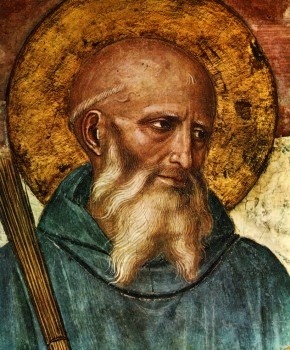We all know that red martyrdom is that of shedding one's blood for the Faith.
But, there is a confusion about what is called "white" and "green" martyrdom.
I use an Orthodox site for this comment.
....the green martyrdom of the monastic and ascetical life deals with such attachments at their core, in the spiritual heart. Affirming nature, while grieving its fall in the universal sense as well as in the personal, the ascetical Christian weeps for his or her sins, gathering the senses into the spiritual heart through prayer, so as to be freed from carnality. The world is holy; it is not God. For the Christian ascetic, the redemption of the world and society can never be achieved through a social movement, much less through individual activism. This is the foundation of western liberation theology: that God's Kingdom comes through outward struggle and activism. Yet the Christian ascetic - the true green martyr - knows that the Lord said, "The Kingdom of God is within you," (Luke 17:21), and thus fights on the battlefield of the spiritual heart, since it is only on this battlefield that victory can be won in the only war that counts: the unseen, spiritual warfare.
http://www.orthodoxcanada.com/journal/2006-02-07.html
Some people call this white martyrdom. But, I think there is a bit of a difference. Some say that monastics, hermits and other people who leave society, such as the Desert Fathers, are white martyrs.
To me, the green martyr is a person in the world who suffers and lives a monastic type of life in the city or in the town. In other words, a lay person who does stay in society but suffers and lives in an ascetic manner may be experiencing green martyrdom. Asceticism is absolutely part of green martyrdom. One may choose this freely just as a martyr chooses instead of giving up on the Church or Christ.
Now the question is this. Does one choose martyrdom? No, not really, which is why there is in my mind a difference in white and green martyrdom.
Obviously, one who is a red martyr does not go looking for martyrdom. It is oppressed upon them from the persecutors. The white martyr, who chooses to go into a monastery and takes vows of poverty, chastity, obedience, and in the case of the Benedictines, stability, does choose, but in answer to a call from God.
The green martyr stays in the world, suffers either because God has given that suffering, or/and because the person chooses suffering and asceticism.
For example, a person I know has given up almost all his personal possessions, eats simply, has given up alcohol and prays several hours a day. He is an ascetic in the city. Few know his lifestyle.
Now, God has called him to do this, but he has also had suffering thrust upon him in terms of physical illness and huge family problems. Still, he knows that he is to have a cell in the world.

Green martyrdom may, therefore, be a combination of the non-choosing of the red and the choosing of the white. It is seen in icons, by the way, in the Orthodox tradition. Rose of Lima, who is my confirmation saint, is pictured as a green martyr. She was a lay person living in an ascetic manner. But, St. Benedict in Eastern iconography, is also shown in green, for green martyrdom. Sometimes, icons are confusing, as the writer may show both green and red, but this could mean the death of a martyr who was also an ascetic. Such are some icons of St. Andrew.
St. Cyril, of the great patrons of Europe, along with St. Benedict, Cyril and Methodius, is usually shown in green, the symbol of asceticism. His brother, Methodius, the monk, is also frequently painted in green.
And, and important note. Only those who suffer and take on suffering for Christ's sake and for the sake of the Church are martyrs. Not everyone who suffers is a martyr.
A good source, believe it or not, for a list of the symbols of the saints is found here
http://en.wikipedia.org/wiki/Saint_symbolism

